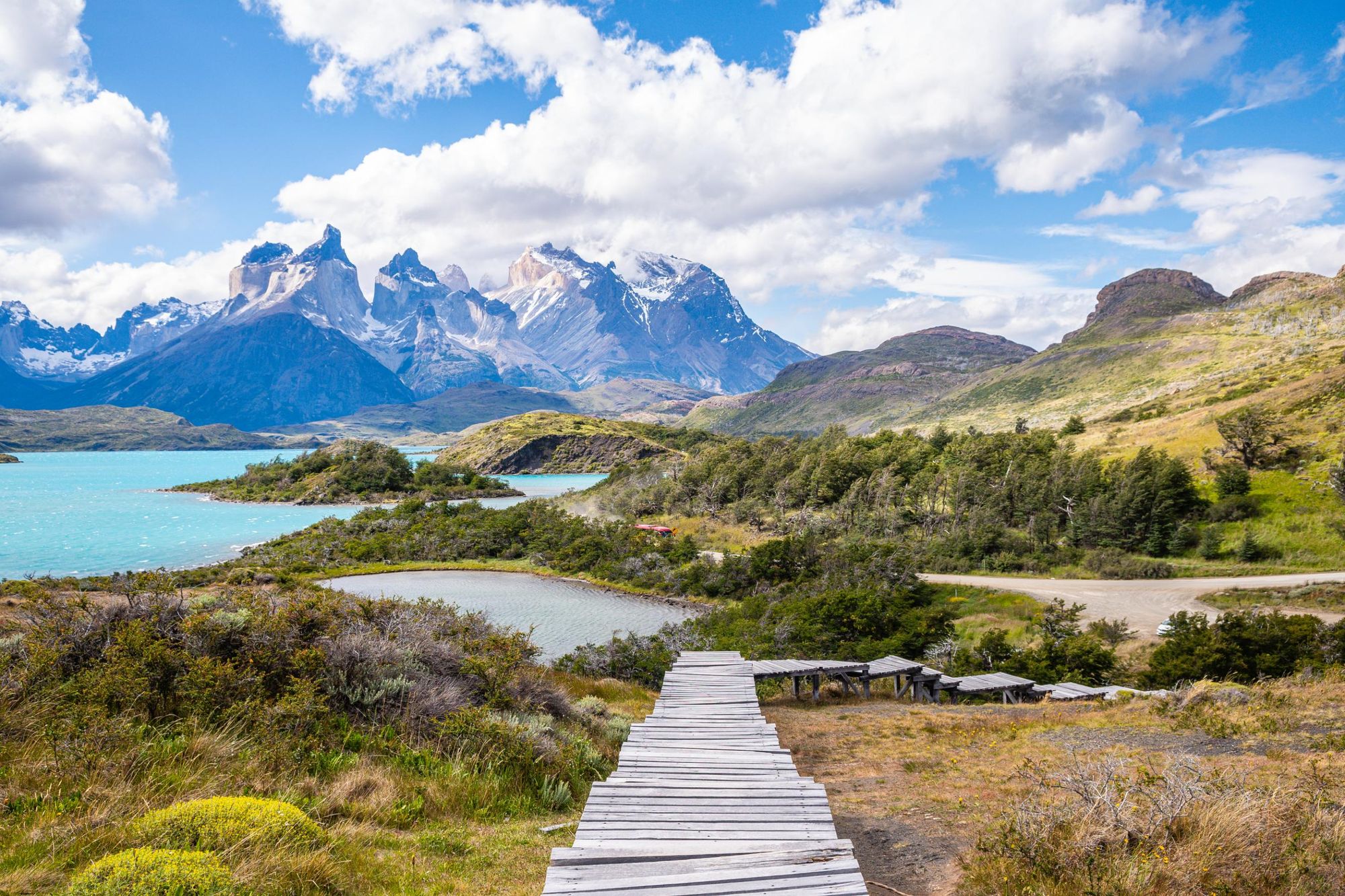The W Trek is the most famous trekking route in Torres del Paine National Park, showcasing the unmissable highlights of this iconic corner of Chilean Patagonia.
“If you only plan on going to Patagonia once, and trekking is your thing, then Torres del Paine might rightly be at the top of your adventure wishlist,” says Adam Roberts, a Chilean destination expert at Much Better Adventures. “The W Trek route takes you through a greatest hits compilation of the national park’s walks, showing it in all its glory - getting up close to Grey Glacier, Lake Nordenskjold and of course the Towers of Paine themselves. It’s hard not to be blown away by the majestic natural beauty of this southern Chilean paradise.”
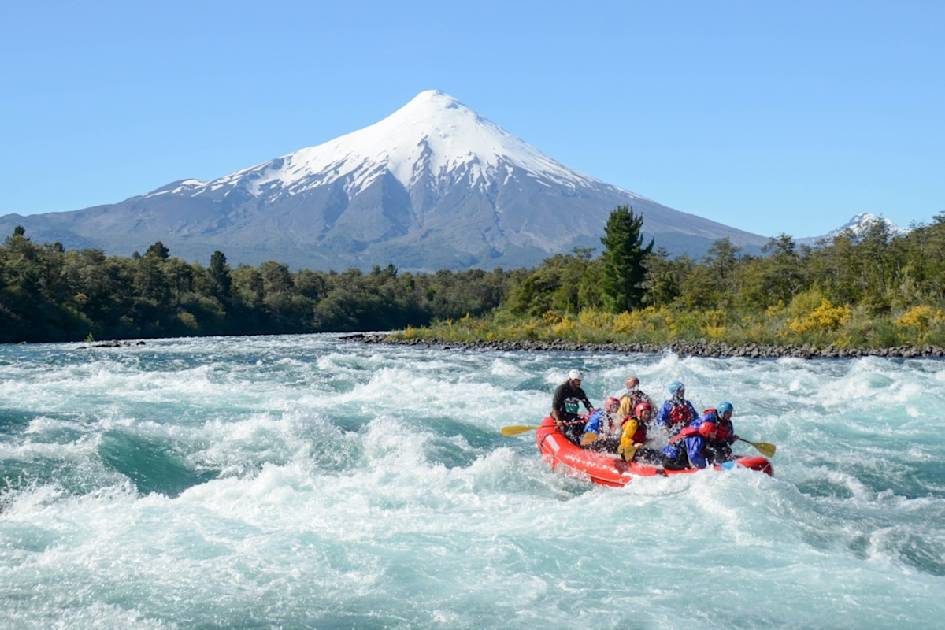
Raffaele di Biase, founder of Chilean B Corporation Birds Chile, agrees. “Torres Del Paine is absolutely beautiful,” he says. “It's such an iconic destination in Patagonia and it's one of our best-known destinations around the world.”
The W Trek route takes you through a greatest hits compilation of the national park.
The W Trek is partly signposted, and usually busy, so it is possible to walk the route unguided. However, most hikers choose to join a guided group, not just as this provides more security and hugely lightens the logistical load, but also because of the historical, wildlife and cultural knowledge a guide adds.
Here’s our guide to the W Trek - one of South America's best hiking routes. This route description is a short summary, designed to inspire but not to serve any navigational purpose. It is not intended to guide you on the route and further mapping or planning (or a guide!) will be required to safely walk the W Trek.
Where is the W Trek?
The W Trek is the most famous hiking route in Torres del Paine National Park, in Chilean Patagonia. The route takes you to the iconic granite towers which give the park its name, as well as to glaciers, past glimmering lakes, and into valleys.
The W Trek: The 46-Mile Route in Four Days
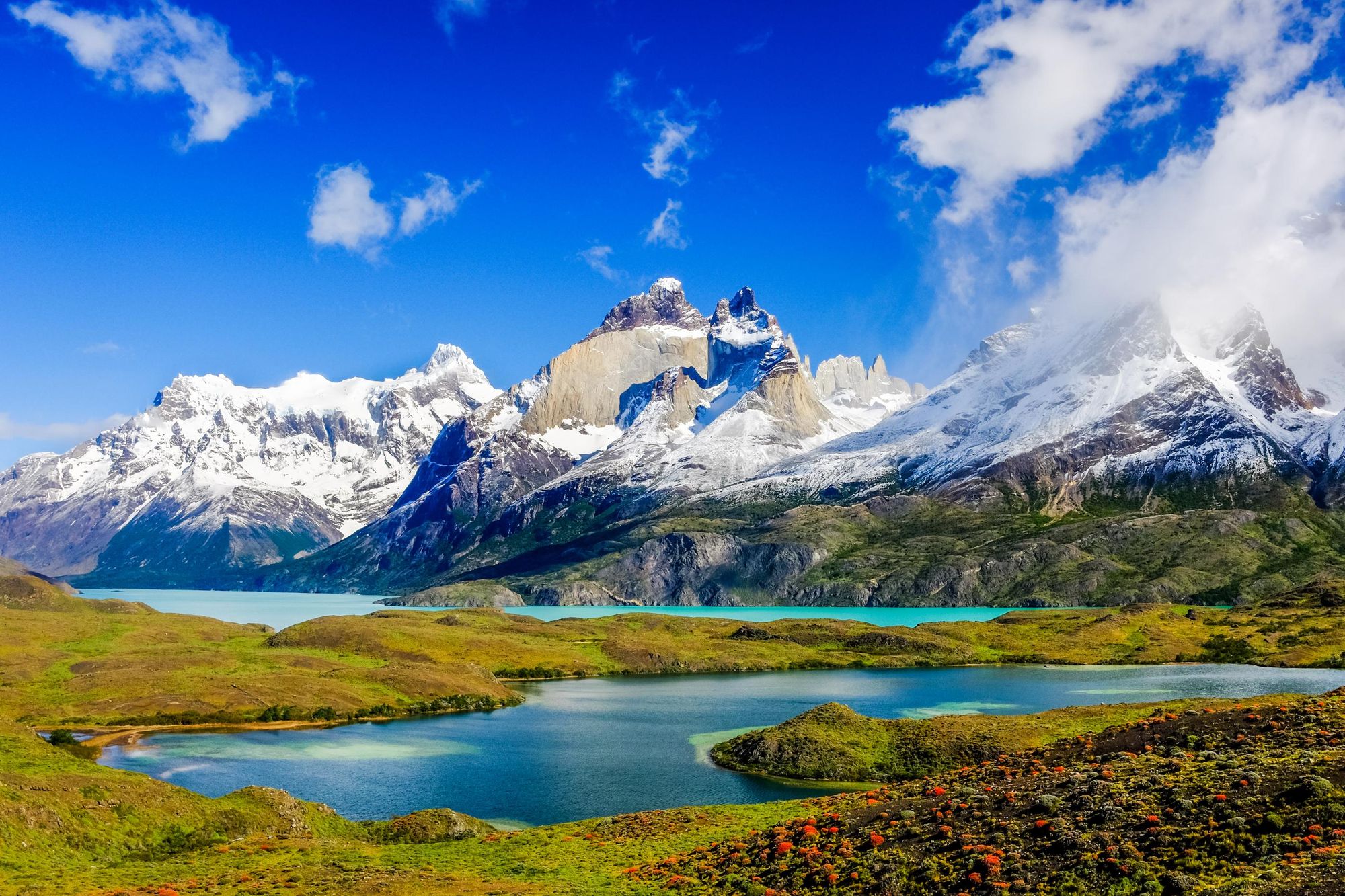
- Distance: 46 miles (75km)
- Days: 4-5 days
- Start/Finish point: Puerto Natales/Central Sector - Paine Grande/Puerto Natales
The W Trek is one of South America’s best hiking routes. Nestled deep in Chilean Patagonia in the south of this remarkable, lengthy country, the iconic views on the route range from the jagged peaks which give Torres del Paine National Park its name to the glimmering waters of Lake Nordenskjold, the wild serenity of the Francés Valley and the unforgettable Grey Glacier.
The route is usually hiked in four days. If five days are taken for the trip, the additional day usually comes first on the itinerary, before the trekking has started. It allows you to separate the transfer from Puerto Natales to Torres del Paine from the first day of hiking. You'll arrive a day earlier and spend the night in the Central Sector, meaning that come the morning, you’re well rested and ready to hike. The four day itinerary involves taking the transfer from Puerto Natales to the national park and beginning the W Trek hike the same day.
Day 1: Puerto Natales to Central Sector (via Las Torres)
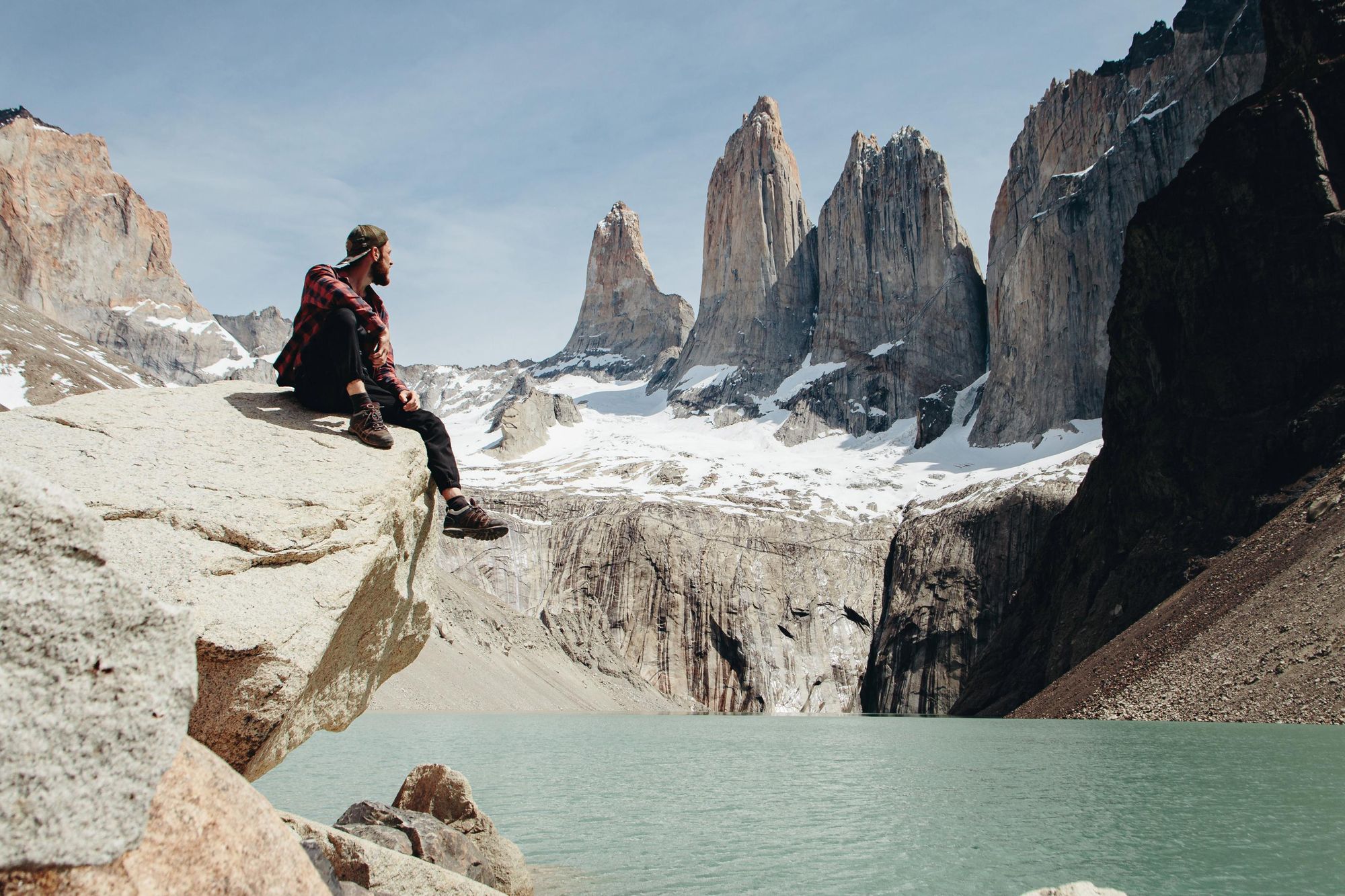
- Distance: 12.4 miles (20km)
Having taken a two and a half hour transfer from Puerto Natales to Torres del Paine National Park; you’ll begin your hike from the Central Sector, which is the operational base on the east of the W Trek. It’s a common starting and finishing point for the W Trek, with two refugios and a camping option, as well as the EcoCamp Dome and Hotel Las Torres.
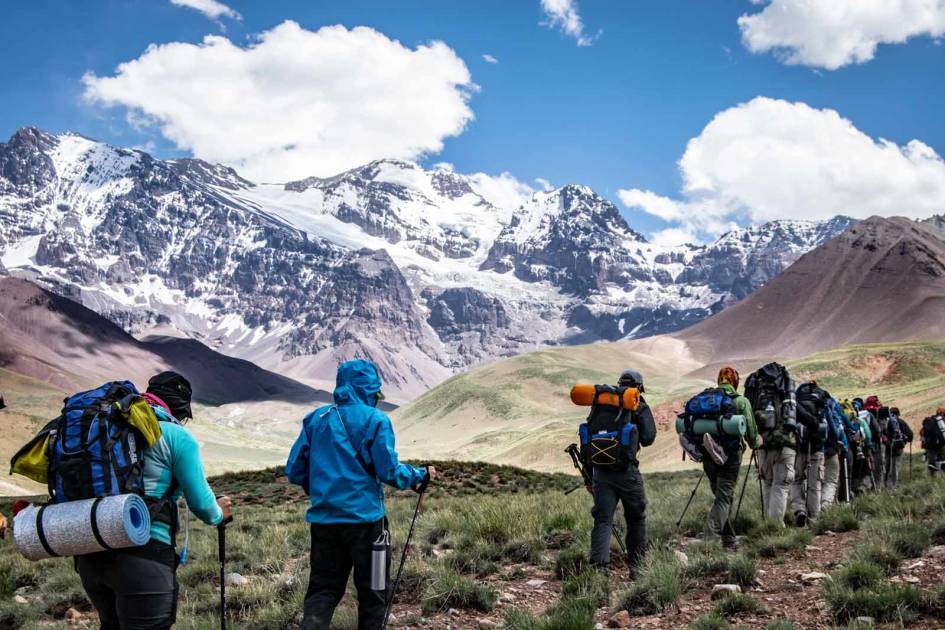
From the Central Sector, you’ll then be hiking out-and-back to Las Torres, the famous towers of Torres del Paine. The initial ascent follows the Ascencio River into the valley of the same name, passing through beech forests and past waterfalls before arriving out at a terminal moraine - a ridge marking the maximal limit of a glacier advance. It’s at the top of this, at 900m, that you’ll get that famous sight of Las Torres. Most people have lunch here before turning back and retracing their steps to the Central Sector. You'll spend this night in Central.
Day 2: Central Sector to Francés Sector
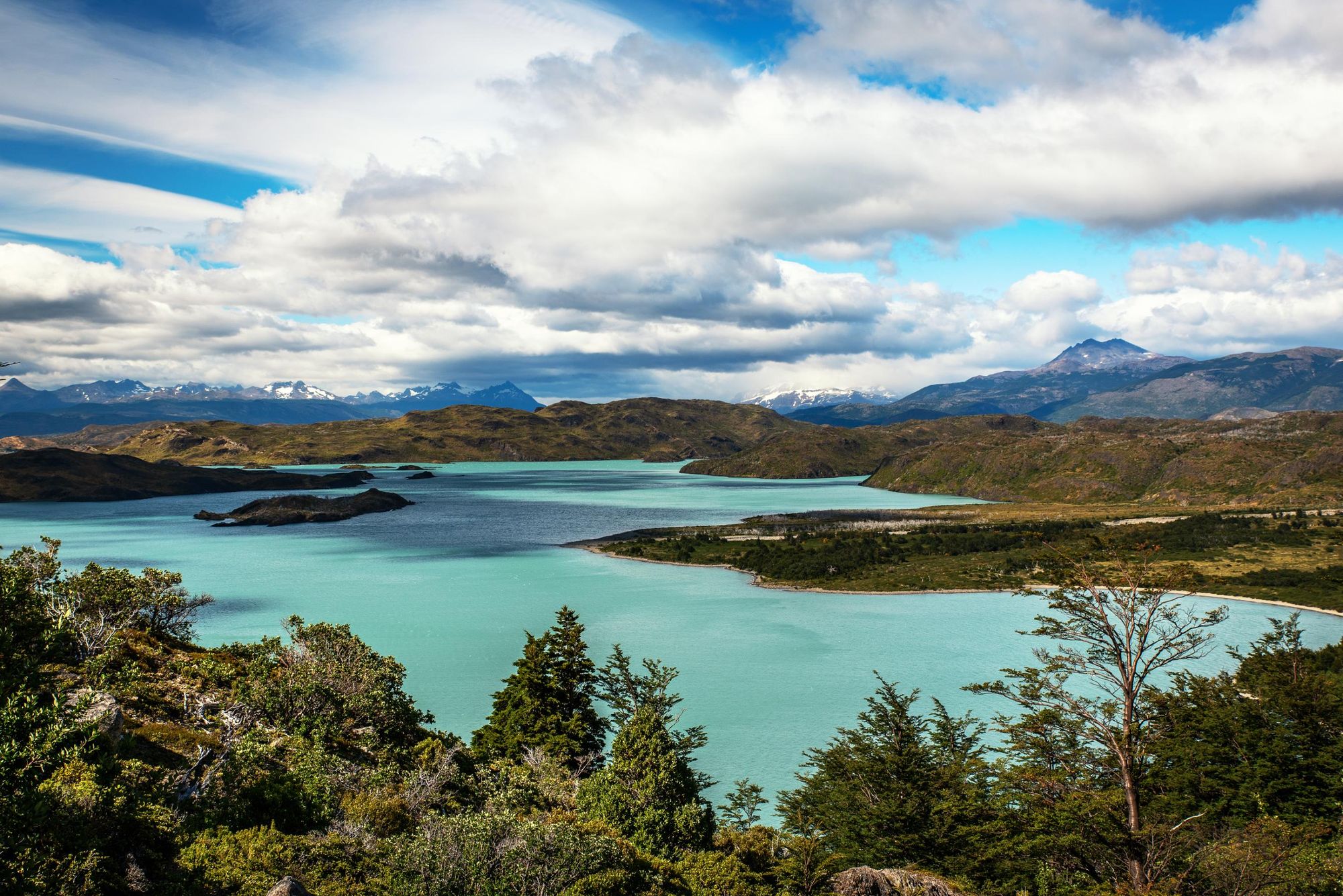
- Distance: 8 miles (13.5km)
Leaving Central, you’ll notice the trail gets a little quieter as you move away from the day trippers coming purely to see Las Torres. You'll head along the turquoise Lake Nordenskjold, beneath the mighty Mount Alimrante Nieto, to Francés Sector. Before you finish the route, you’ll pass Cuernos del Paine, and there’s a terrific view of the lake in full from the high point of the segment, which is only around 200m, and the French Glacier on the Paine Grande Mountain.
In the Francés Sector you’ll find standard and luxury camping options, as well as the dorms of Refugio Francés. The Francés Sector is also two miles (3.2km) from the Refugio Cuernos, so some stay there.
Day 3: Francés Sector to Paine Grande Sector (via Francés Valley)
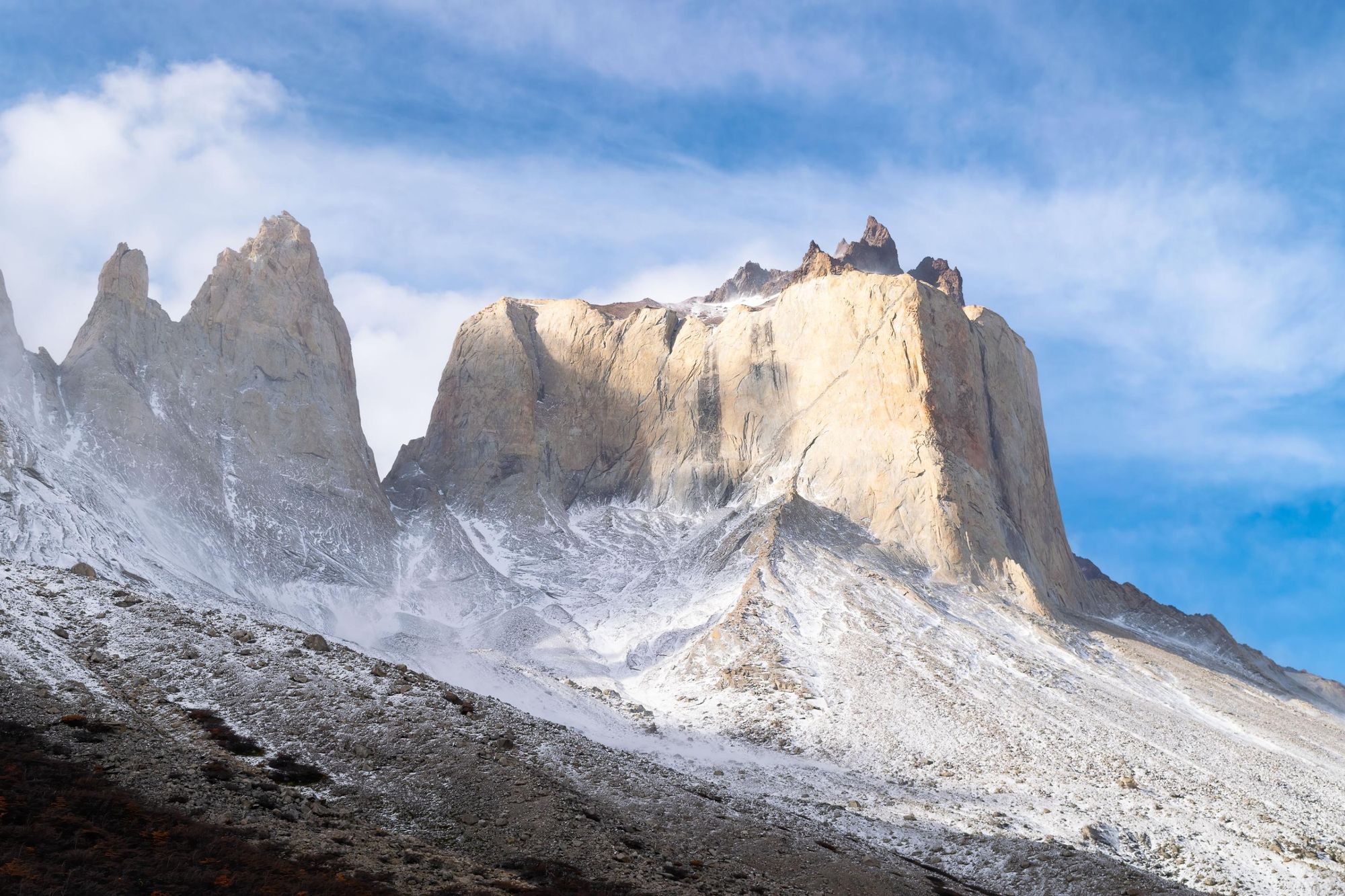
- Distance: 12.7 miles (20.5km)
The third day on the W Trek is the highlight for many, beginning with a hike into the remote Francés Valley, where enormous, snow-capped mountain peaks dominate the landscape on either side of the trail. This section of the W Trek feels particularly tranquil. Emerging through the woods, you’ll reach the Francés Lookout Point, where you’re able to gaze out over an unforgettable view; the remarkable mountains of the Paine Massif in all their glory. From here, track back in the direction of Lake Nordenskjold and head to the Paine Grande Sector.
In Paine Grande, you’ll find the excellent Paine Grande Shelter, which can accommodate 100 hikers in 22 dorms by Lake Pehoé, and also has room for many tents. There’s also the Paine Grande Bar, which is perfect for a hard-earned drink - some fine Chilean wine, perhaps? - overlooking the Paine Grande Massif.
Day 4: Paine Grande Sector to Puerto Natales (via Grey Glacier and Pehoé Lake)
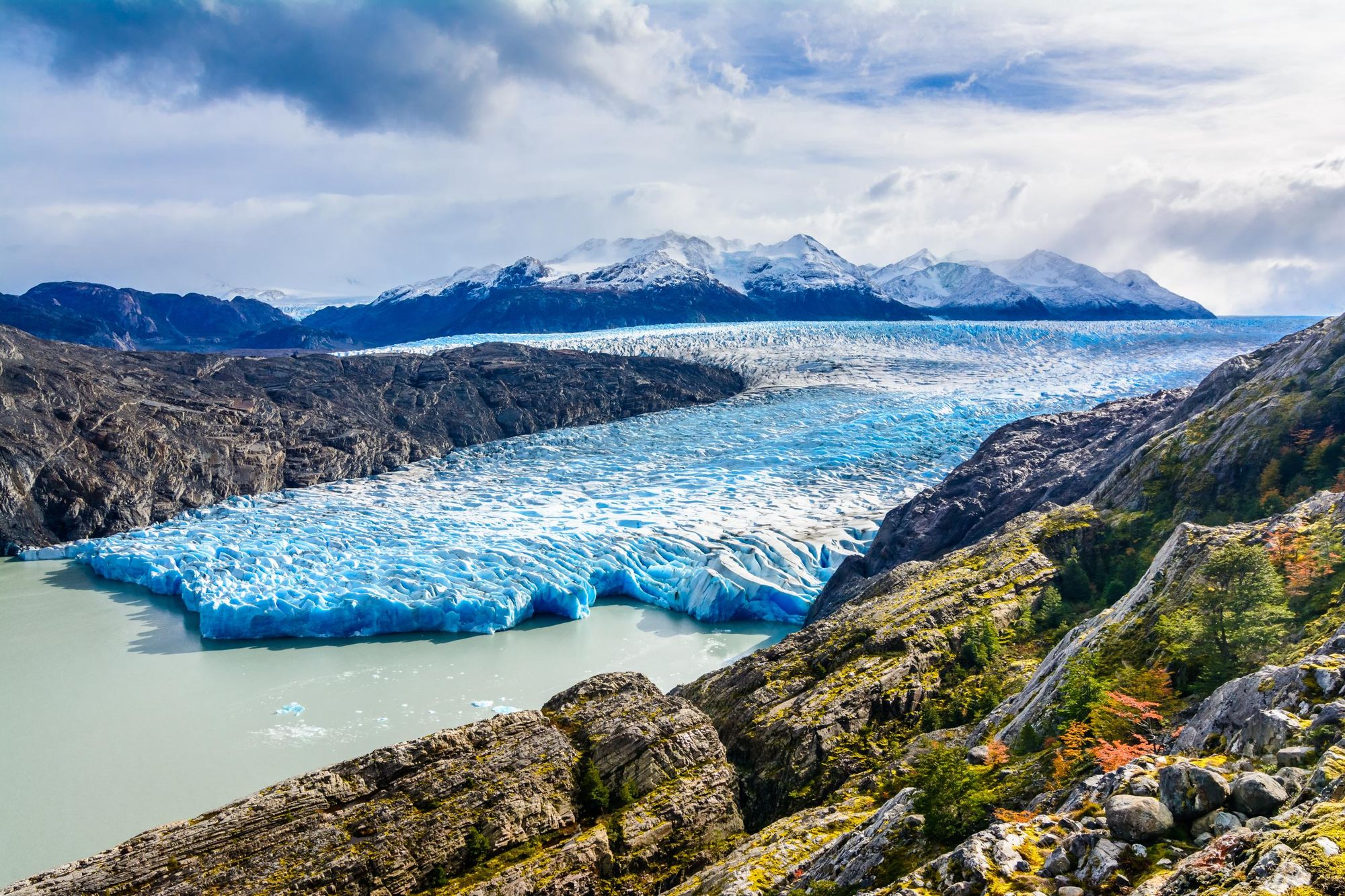
- Distance: 13.5 miles (22km)
The final day of the W Trek through Torres del Paine will take you from the Paine Grande Sector over to the Grey Sector and back. The highlights include hiking beneath the highest mountain in Torres del Paine, Paine Grande (2,884m/9,462ft), the hanging glaciers which creep over the mountains, and of course, reaching Lake Grey and seeing the remarkable Grey Glacier.
You’ll then retrace your steps back to the Paine Grande Sector, where you’ll make a scenic exit from Torres del Paine, taking a boat across Lake Pehoé to reach the bus to Puerto Natales.
When is the best time to walk the W Trek and visit Torres del Paine?
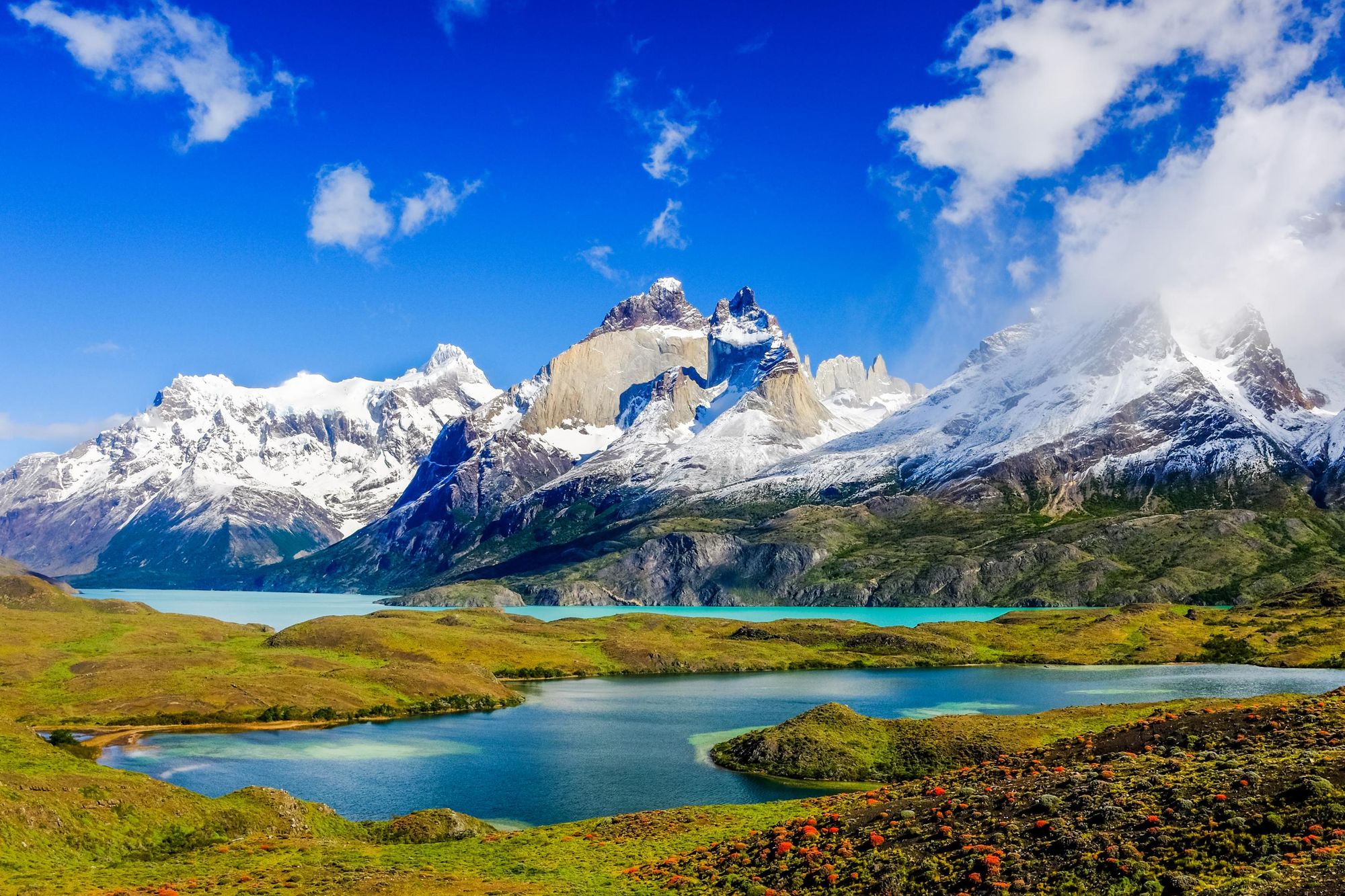
Summer runs roughly from December to March in Torres del Paine. The autumn season runs from March to May, and winter lasts from June to September - and brings with it snow. In winter, only guided group tours are possible, and you must prepare and pack for the cold. Spring lasts from September to November.
Don’t be afraid to have a Patagonian adventure during Autumn.
The high season in Torres del Paine is in summer, from December to February, and the W Trek is busiest in January and February. Weather can never be guaranteed in Patagonia, though. It’s famously unpredictable. With this in mind, the best time to visit depends on what you’re looking for. If you’re all about socialising, long daylight hours and don’t mind larger crowds around the viewpoints of Torres del Paine, summer is ideal. If you’re looking for more of an intimate experience, though, Raffaele di Biase recommends the shoulder season.
“I recommend travellers go to the park in the shoulder seasons,” says Raffaele. “During the shoulder season you're able to have an experience inside the national park that you're not going to be able to have during the very high season - which is January and February down here.
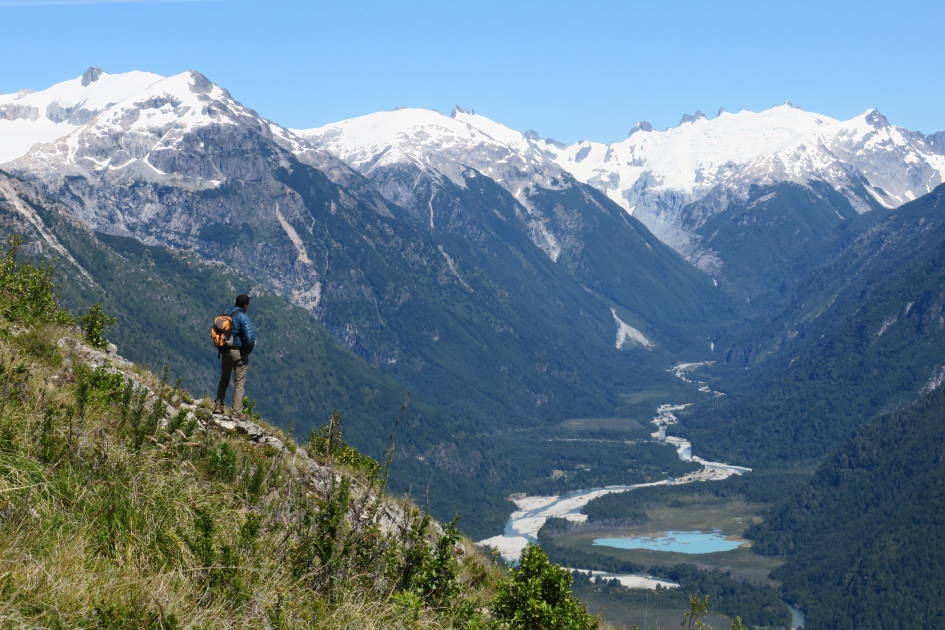
“Don’t be afraid to have a Patagonian adventure during Autumn. The climate in Patagonia is very unpredictable. You can come in summer and have snow, wind and cold - just as you could have it in Autumn, but in Autumn, you're going to find the place more empty. You can have a more intimate experience and the colours of the Autumn; especially in central and south Patagonia - so in Aysén and Magallanes - are really, really stunning. The forests are deciduous, so the leaves change colour and the landscape is really spectacular.”
Accommodation: Where to Stay on the W Trek in Torres del Paine?
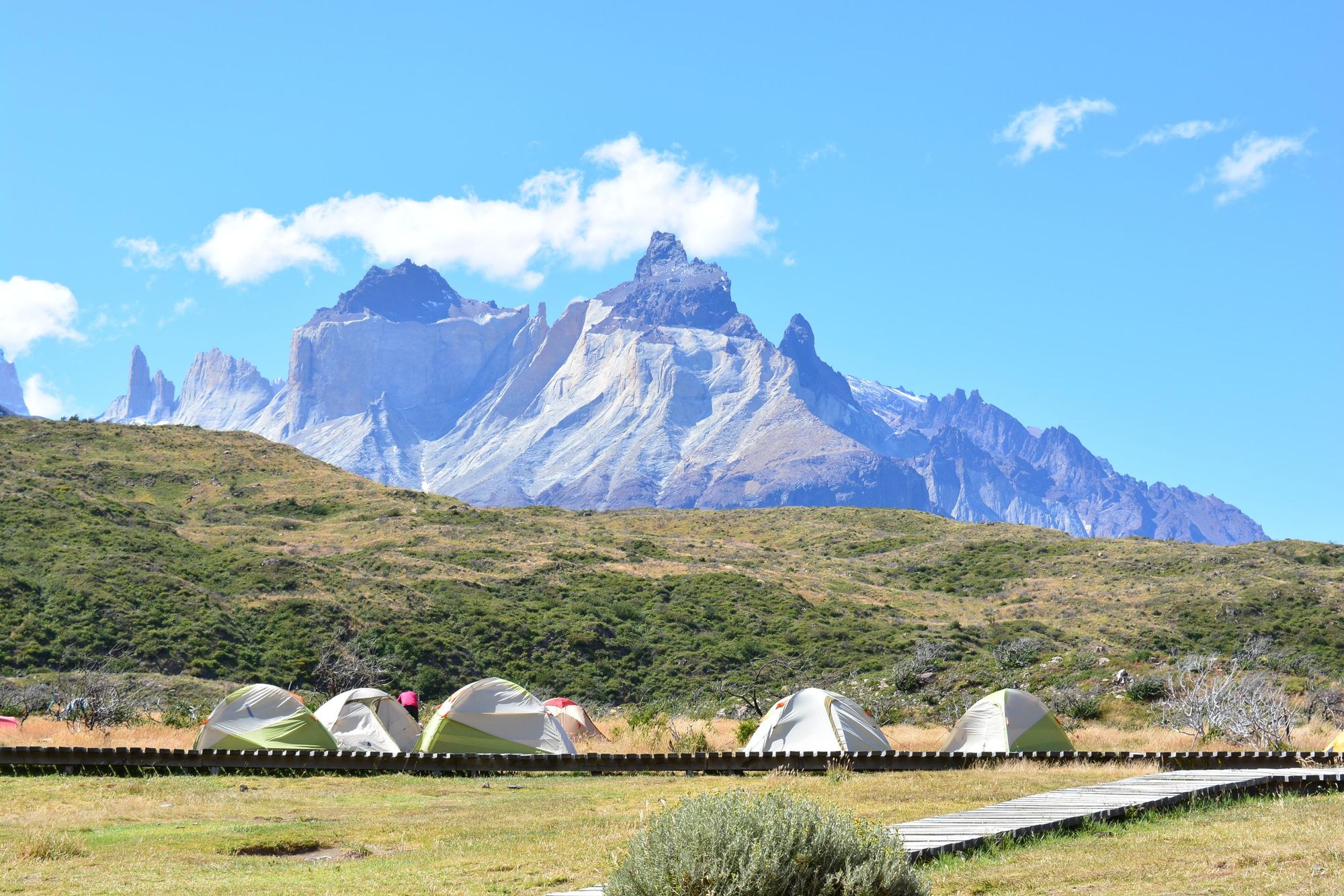
“The classic W Trek can either be done staying at campsites or refugios,” says Adam Roberts.
Refugios are much like mountain huts or city hostels. They are buildings with six/eight-person dorm rooms, bars, food and showers. There are refugios at each major stop on the W Trek, though they get extremely busy during the high season. You should book stays at refugios in advance.
Nighttime time for me is when it gets really special - crawling out of a tent to be greeted by the Milky Way overhead in the night sky.
If you choose to camp, you can (of course) bring all of your own kit with you, or if you don’t fancy carrying it but you do want to camp, you can hire the gear needed at campsites as you travel. There are few experiences like falling asleep beneath the stars in the wilds of Patagonia, but do note that you must also book your place at each campsite well in advance.
“The destination provides an accessible balance of remote long-distance trekking trails linked together by a well-managed infrastructure,” says Roberts, “meaning you can walk to your heart’s content all day in truly stunning scenery, and then sip a local beer and make some new friends at one of the ‘refugios’ in the evening. Nighttime time for me is when it gets really special - crawling out of a tent to be greeted by the Milky Way overhead in the night sky.”

When you book a campsite or lodge, you’ll also have the opportunity to add full board meal packages, including your dinner, breakfast and lunch.
Outside of the W Trek, there are some luxury hotels in the national park.
“There are a few hotels inside the park,” says Raffaele. “You also have different options outside the national park, in Puerto Natales, which is the closest town to Torres del Paine.” The wildlife around Torres del Paine is actually mostly outside the park, rather than inside the park, Raffaele notes. “Outside the park, on the steppe, are a lot of opportunities to watch wildlife,” he adds.
Alternatives to the W Trek: 3 of the Best Hikes in Torres del Paine
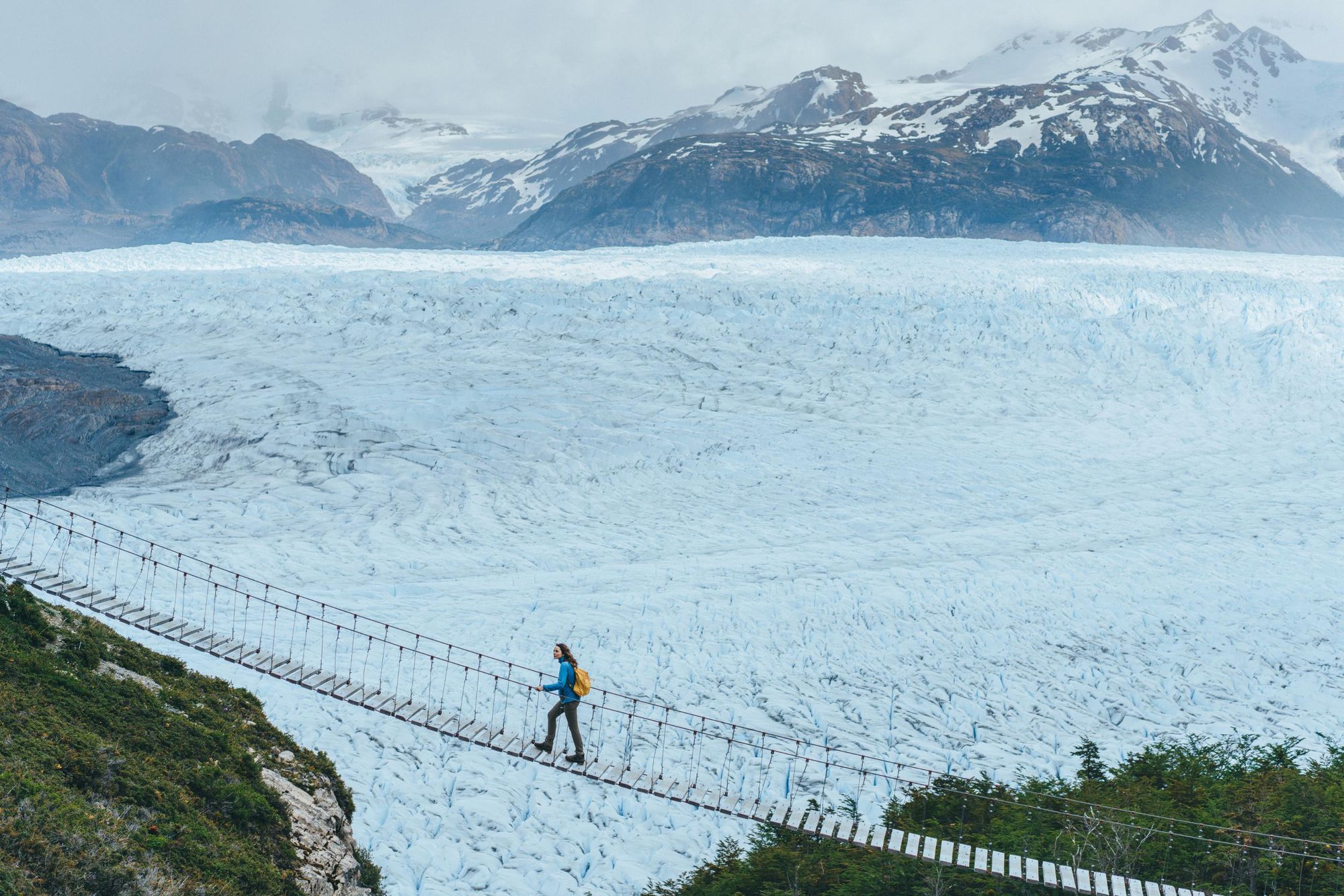
The W Trek is the most famous hiking route in Torres del Paine, but it’s far from the only one. Here are three of the best hikes in Torres del Paine that stray off the W Trek, including the longer O Circuit. “You can have a trekking adventure on the W or the O circuits and sleep in shelters along the way,” says Raffaele di Biase, “or you can also have more of a soft adventure; doing day hikes and spotting wildlife - it's one of the best places in the world to watch pumas.”
1. The O Circuit vs. The W Trek
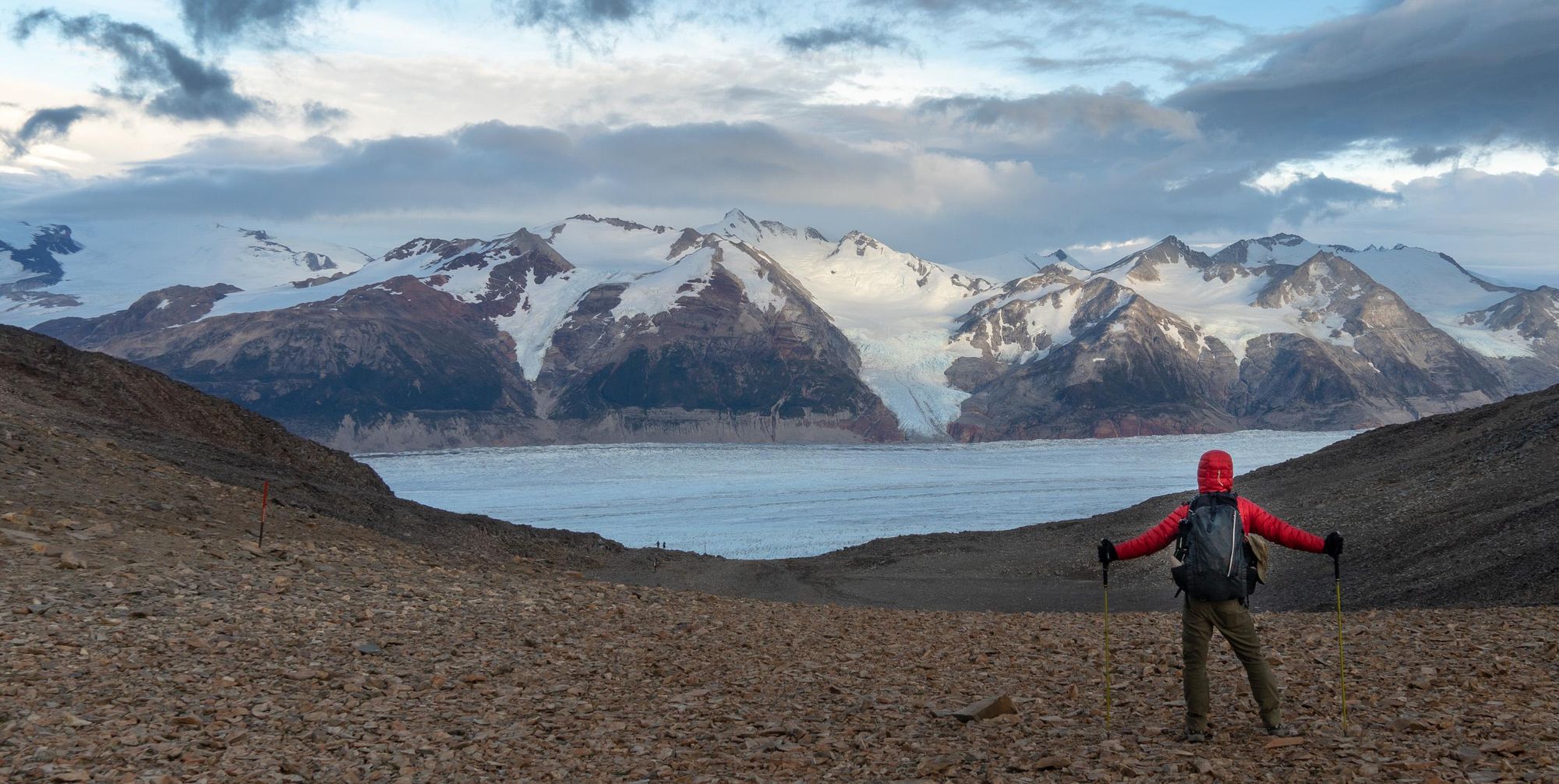
- Distance: 85 miles (136km)
- Days: 7-9 days
If the W Trek is the most direct route to the highlights of Torres del Paine, the O Circuit is the more complete way to see the park. For this reason, it’s often called the “full circuit”. The O Circuit route actually includes the full W Trek, but extends it into a loop, going deeper into the park. The parts of the O Circuit which do not overlap with the W Trek are a lot quieter, and the trail community can be stronger on these parts, as there’s fewer hikers (doing tougher hikes).

While the W Trek can be done in either direction, the O Circuit is one-way, usually starting and finishing at the Laguna Amarga ranger station or Refugio Lago Pehoe. The highlight of the O Circuit (other than those also included on the W Trek) is perhaps the John Gardner Pass. While it’s heralded as the toughest day on the hike, the views over Grey Glacier are simply sublime.
2. Trek from Puerto Toro to Río Serrano
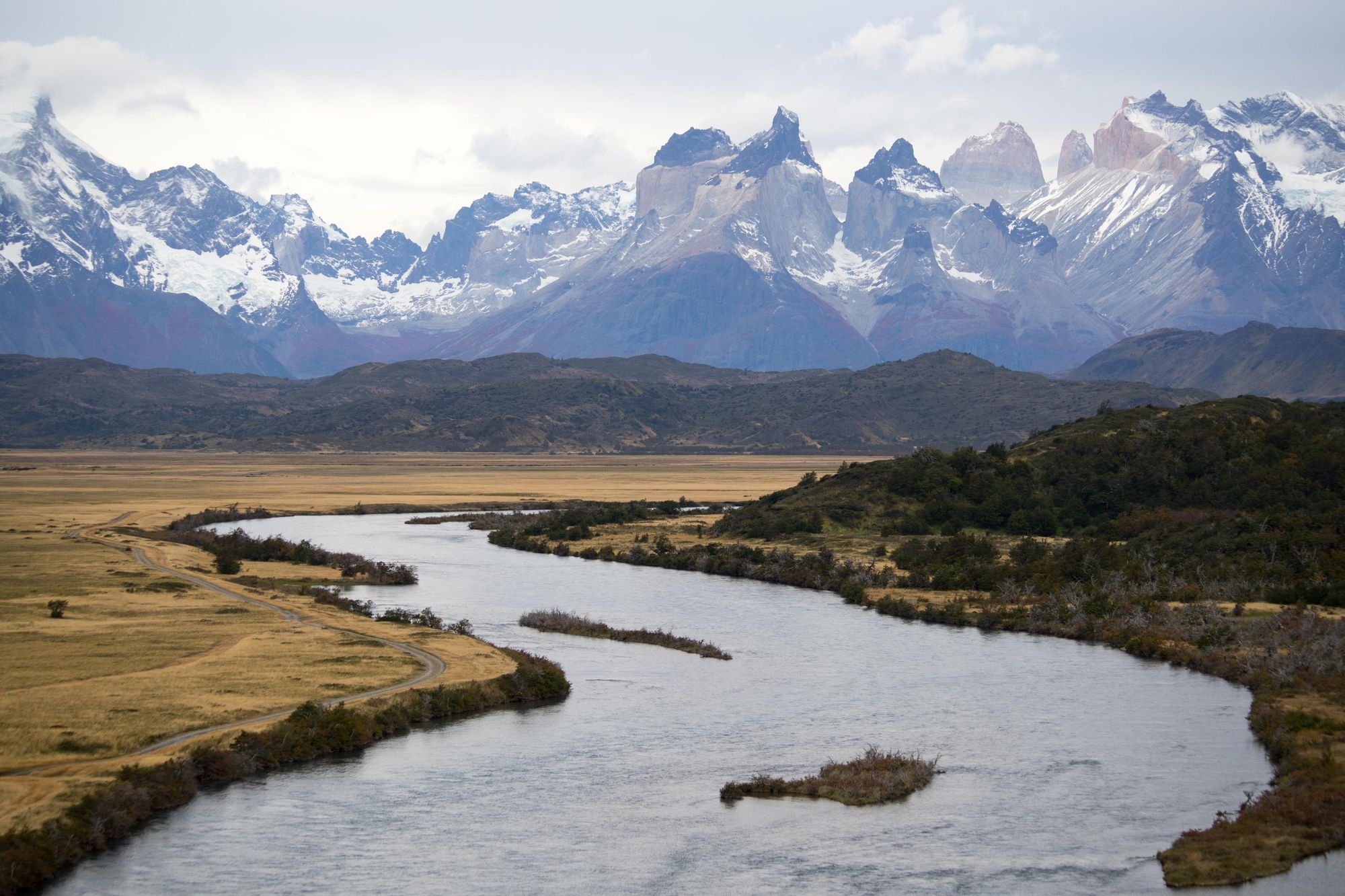
- Distance: 17.3 miles (28km)
To reach the start of this hike, you’ll need to take a back route into Torres del Paine National Park - a boat trip on the Ultima Esperanza Fjord, passing the Balmaceda and Serrano glaciers, to Puerto Toro. You’ll head along a quiet trail to Lago Bruch, where you’ll find a scenic, remote campsite. The next day, trek to Río Serrano, a rarely-visited part of Torres del Paine, which involves river crossings and unique views on the famous jagged towers in the distance. In the Río Serrano Sector you’ll find overnight camping and hotel options for the night.
3. Trek the Bader Valley and Lake Nordenskjold
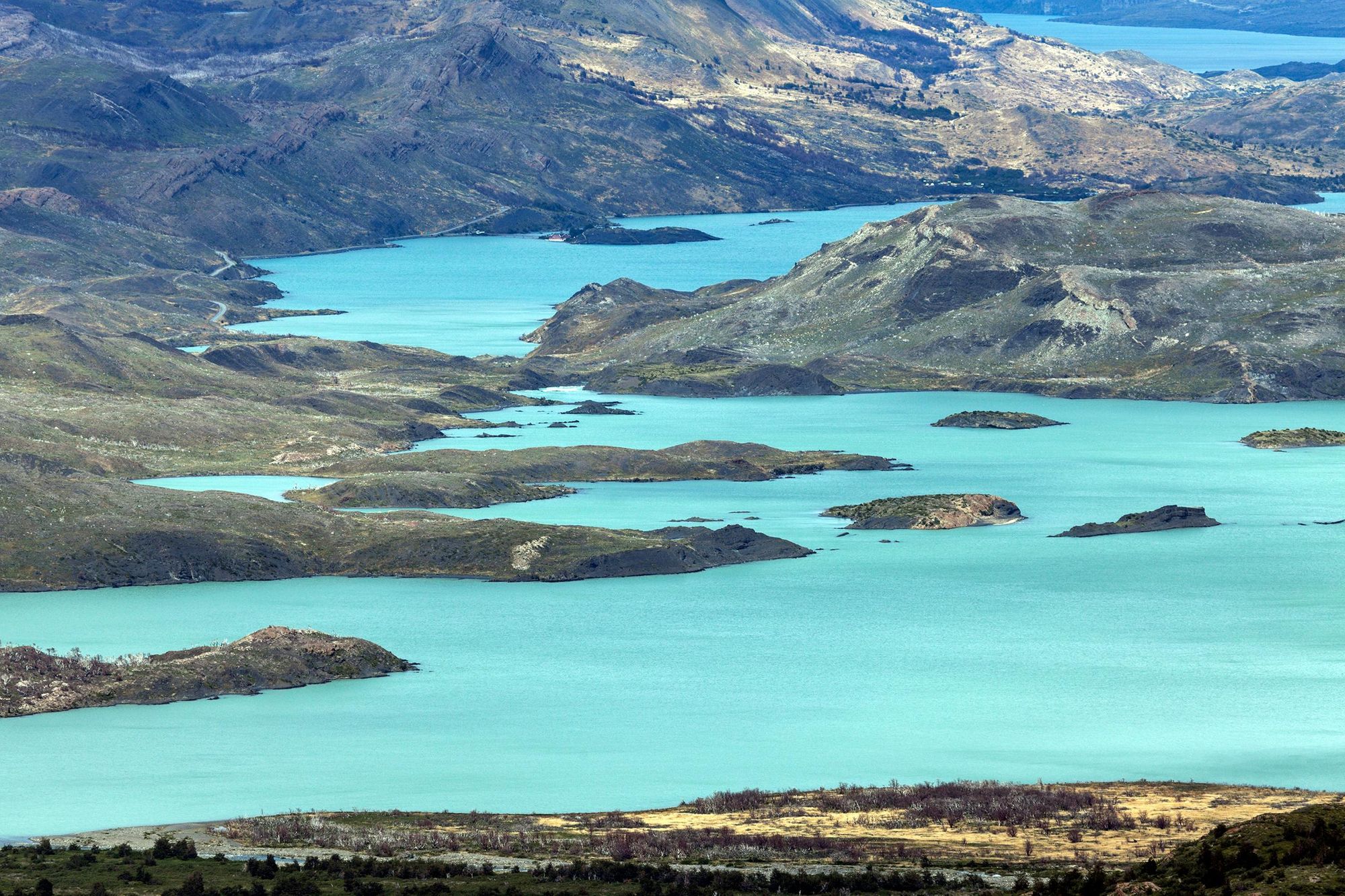
- Distance: 18 miles (30km)
This is an alternative route from Paine Grande to the Central Sector. The classic W Trek route along Lake Nordenskjold is beautiful, but for a little more serenity, head off the main trail towards the Bader Valley, an area of Torres del Paine so remote that accessible is only available with a qualified guide. The valley sits beneath Almirante Nieto and the distinctive horned peaks of the Cuernos.
You’ll cross rivers and face tough uphills, but the views out over Chilean Patagonia are worth all of it. After an overnight camp beneath the stars, descend back to the W Trek trail and follow it to the Central Sector, where you can head out to Puerto Natales or take the hike to the towers.
Where to go in Chile after Torres del Paine? “If you’ve flown all that way then why not make the most of it and visit some other regions in Chilean Patagonia,” says our in-house Chilean expert Adam Roberts. “For example, explore the southern fjords from Puerto Natales, or travel north and spend some time in the outdoor adventure bases of Puerto Varas and Pucón.”
Inspired? Check out our adventure holidays in Chile now!


